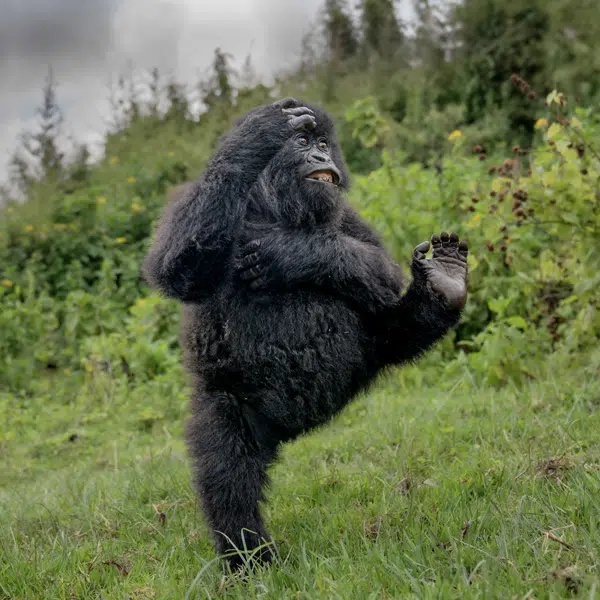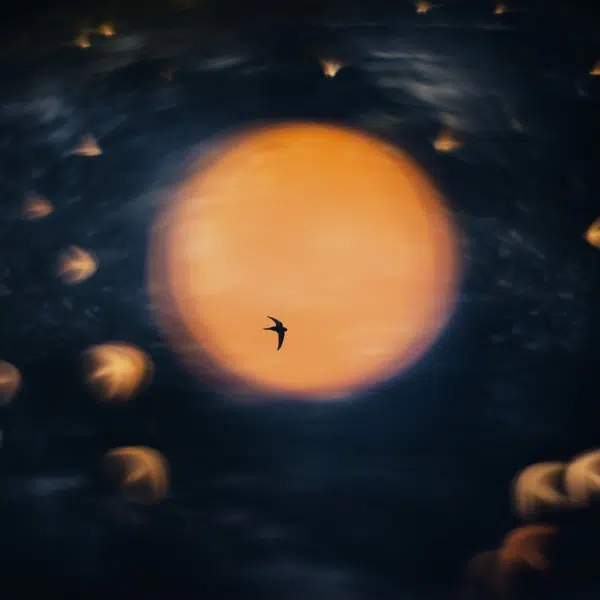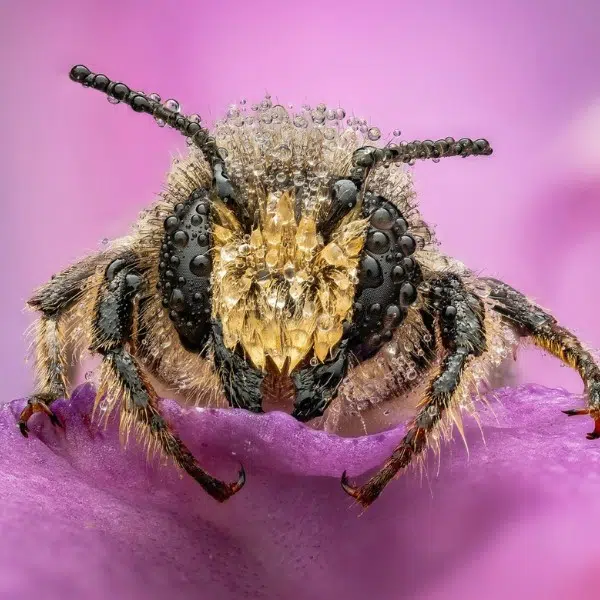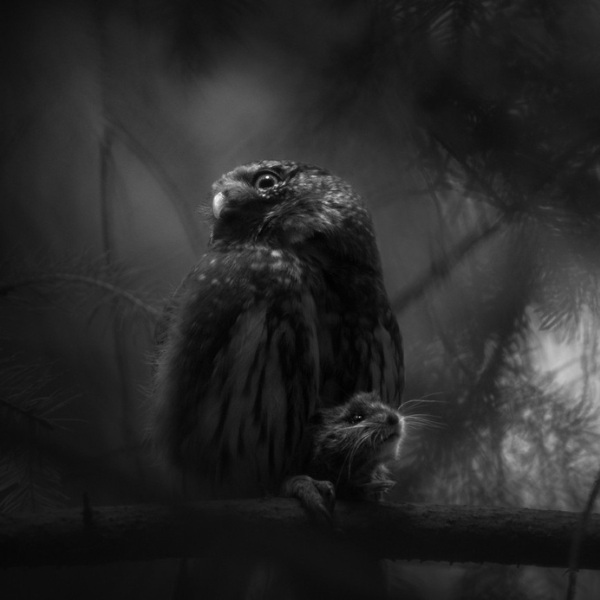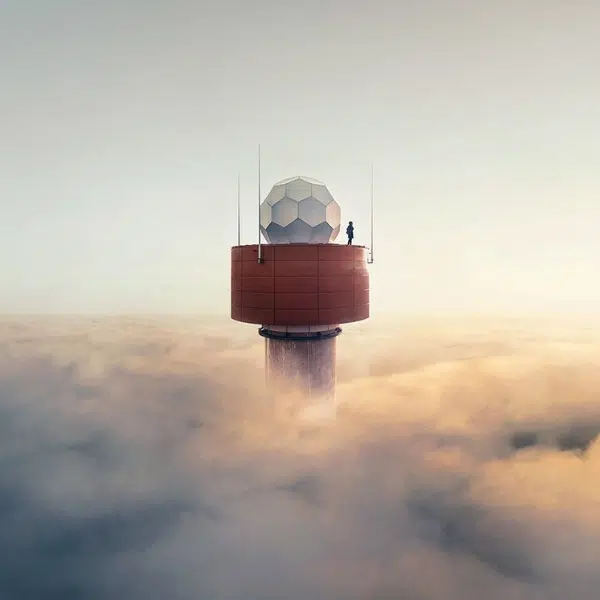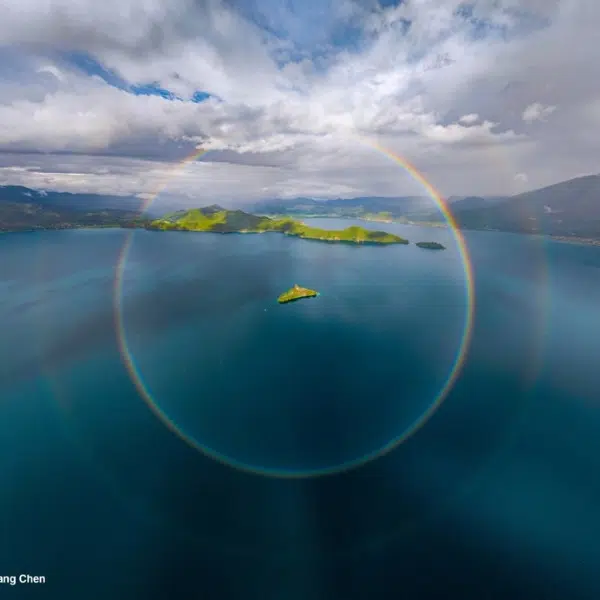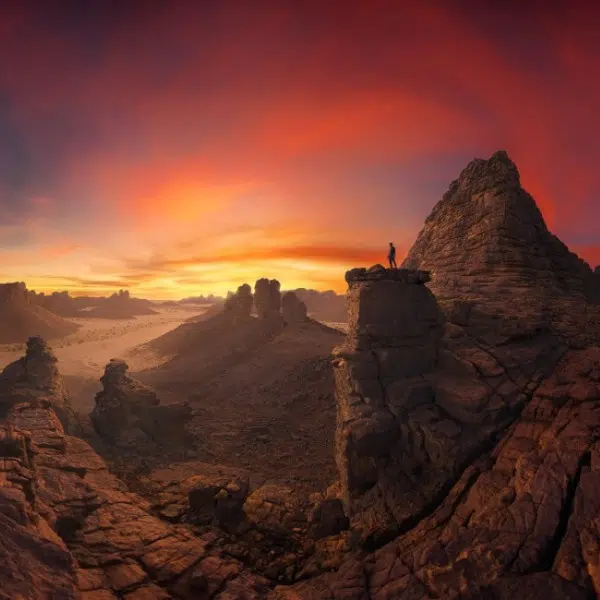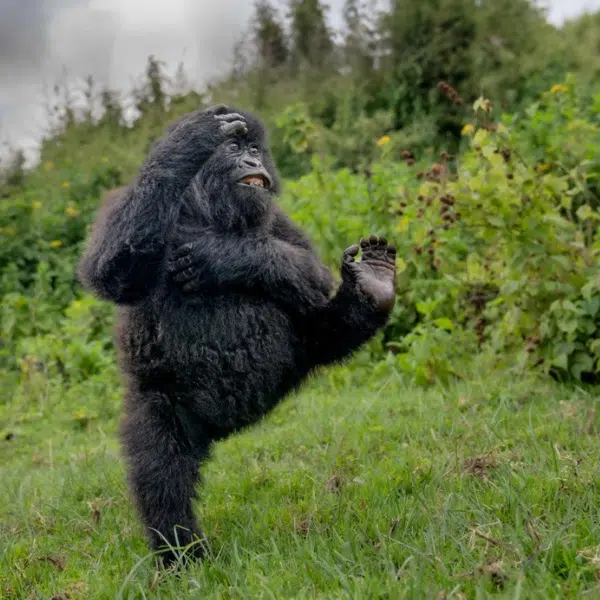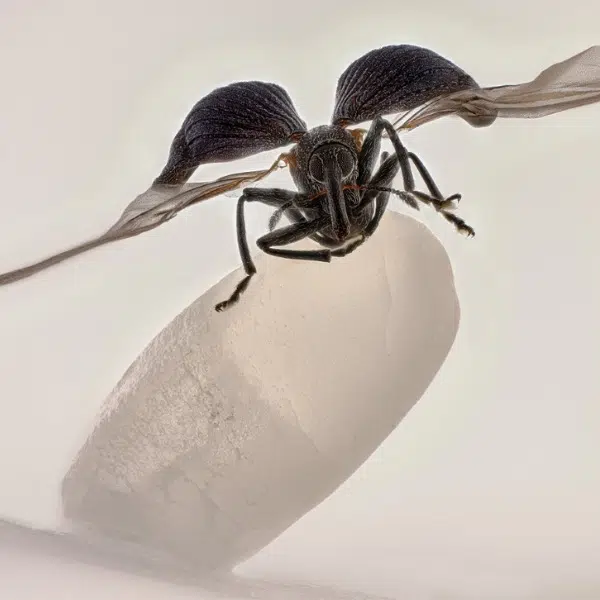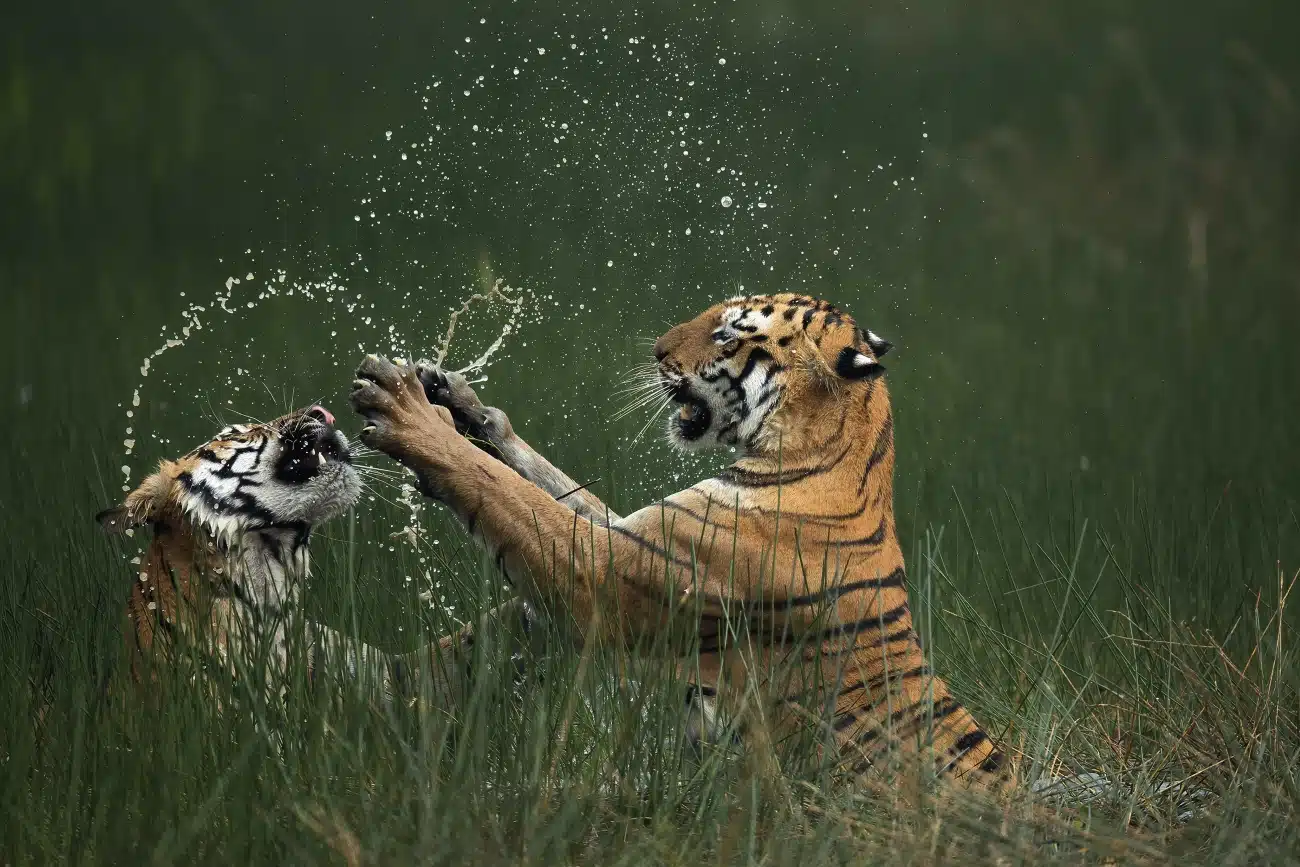
Grand Prize Winner. Bengal Tigers, IUCN Red List Status: Endangered, Tadoba-Andhari Tiger Reserve, Maharashtra, India (Photo: © Mangesh Ratnakar Desai of Pune, Maharashtra, India)
“Over the years, I have witnessed this young male tiger become more confident and assert dominance over his siblings. His path toward independence as an adult starts with the challenge of learning to define and safeguard his territory. This image illustrates a pivotal life lesson as the mother teaches her cub how to fight, giving a masterclass in survival. The tigers entered the water gracefully, and the scene unfolded. I adjusted the shutter speed precisely to capture the water splashes and the impressive dynamics of the tigers interacting with each other.”
A fascinating photo of a young tiger coming into his own has won the 2024 Nature's Best Photography International Awards. Taken by Mangesh Ratnakar Desai at a tiger reserve in India, the image beat out over 25,000 submissions from photographers in 62 countries. Showing a mother tiger teaching her son the skills he will need to survive on his own, the image gives us an insider's look at life in the wild. And what looks like a vicious fighting scene turns out to be a life lesson.
“The tigers entered the water gracefully, and the scene unfolded,” the recalls. “I adjusted the shutter speed precisely to capture the water splashes and the impressive dynamics of the tigers interacting with each other.”
Desai's is one of many remarkable images to be singled out by the competition, which is organized by Nature's Best Photography magazine. Spanish photographer Jaime Rojo continues to receive accolades for his photo story following the plight of the monarch butterfly. His images, which won the Conservation Story category, are an important look at the epic migration these butterflies make every year and the current dangers that are threatening their survival.
Brett Frelich provides an interesting look at life under the waters of Hudson Bay in Manitoba, Canada, with his portrait of beluga whales. “There is nothing more pure than being out in nature. For me, it’s a spiritual experience,” the photographer shares. This spirit shines through in the surreal photo, which won the Polar Passion category. In it, a cluster of white belugas swarm together, with one even appearing to glance at the camera.
In keeping with its mission to display the beauty, diversity, and importance of nature, the competition also honors video with its Nature in Motion category. This year, conservation photojournalist Patricia Homonylo topped the field with her heartbreaking look at birds who lose their lives due to window collisions, and the organizations looking to raise awareness about the issue.
Scroll down to see all of this year's winning images, which will all be featured in a special 100-page winter edition of Nature’s Best Photography. If you want to see all of the Top 100 photographs from the contest, you can also head over to Nature's Best Photography to view the full gallery.
Over 25,000 photos were entered into the 2024 Nature's Best International Photography Awards.
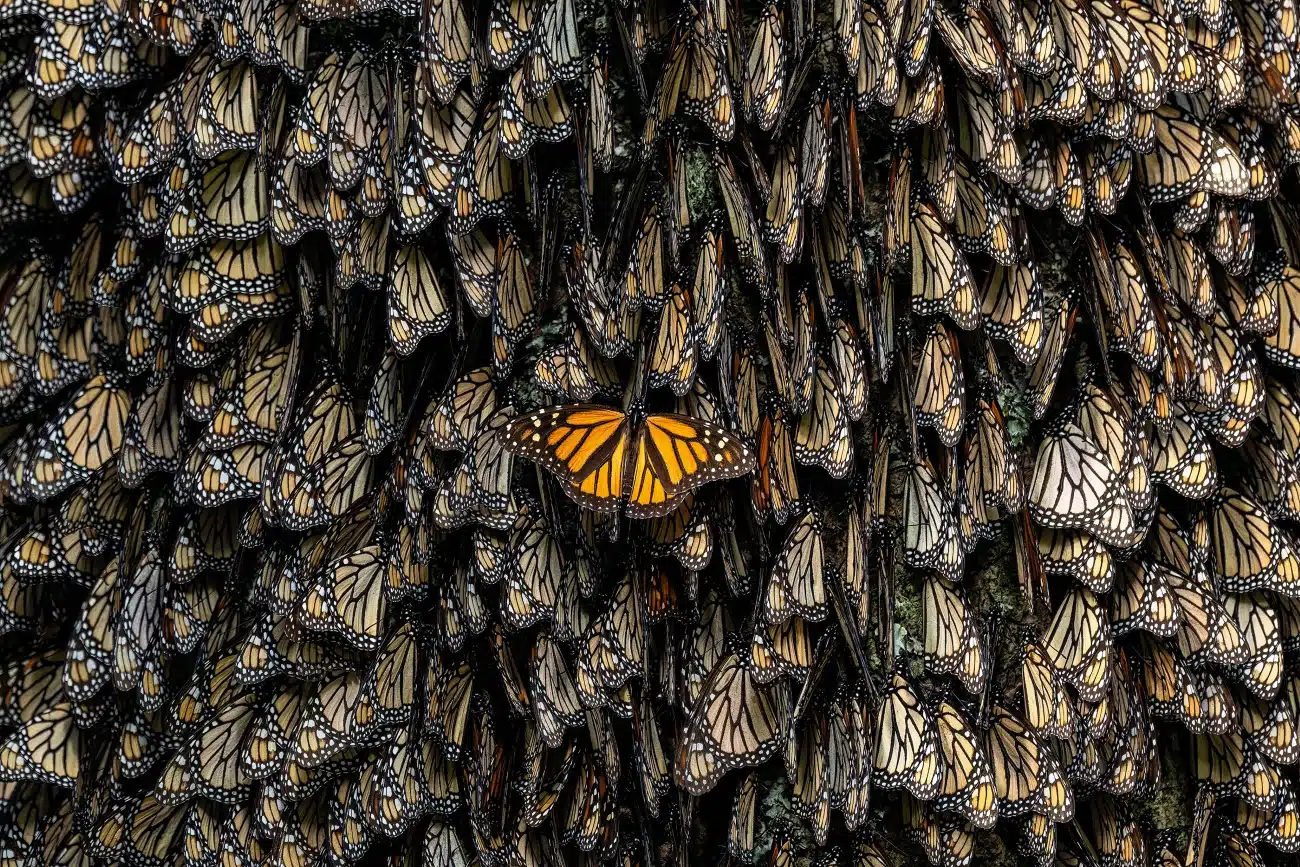
Winner, Conservation Story. Saving the Monarchs, Mexico, USA, and Canada (Photo: © Jaime Rojo of Madrid, Spain)
“Returning for the night within Mexico’s Monarch Butterfly Biosphere Reserve, this monarch stretches its wings and maneuvers into a roosting place to join the other butterflies, packed in closely for protection and warmth.”
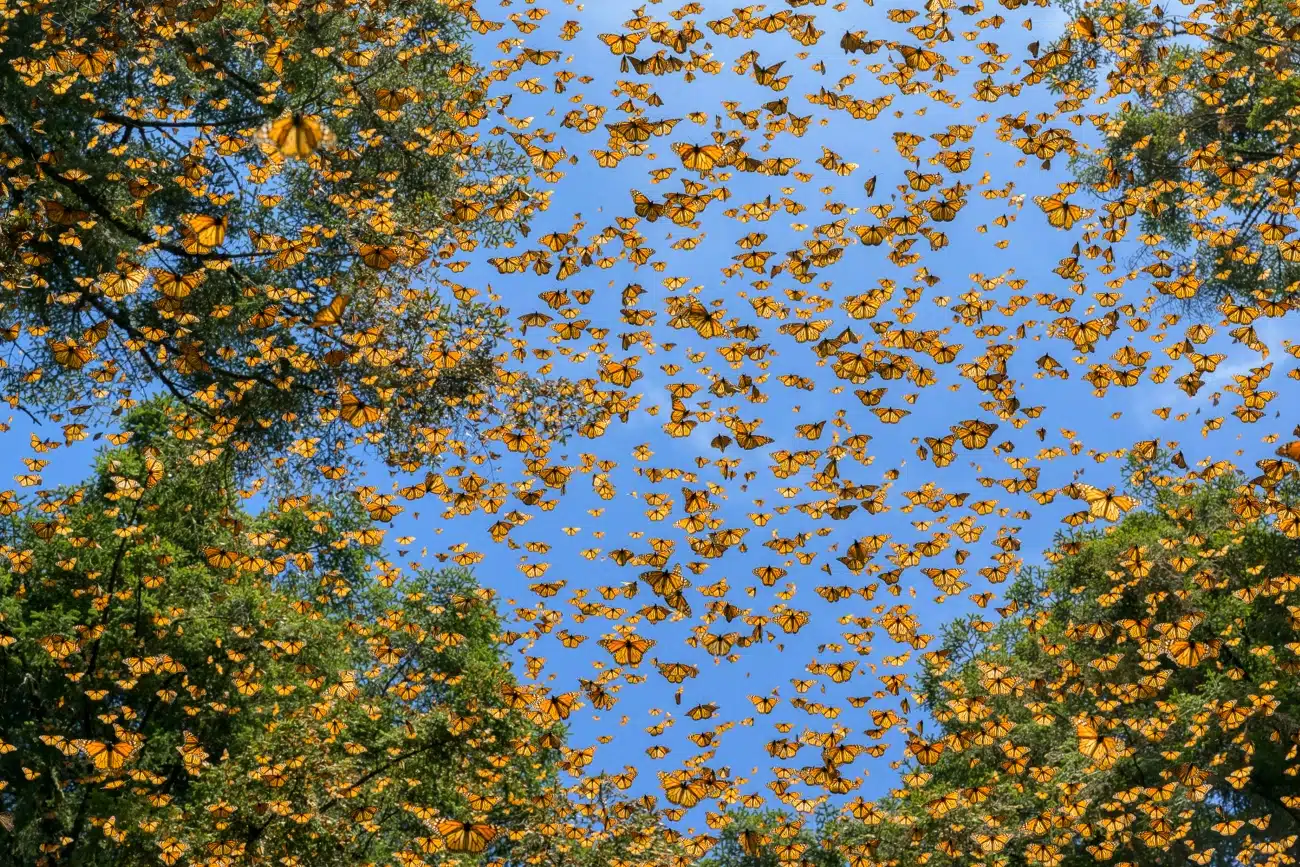
Winner, Conservation Story. Saving the Monarchs, Mexico, USA, and Canada (Photo: © Jaime Rojo of Madrid, Spain)
“Monarchs stream through trees in El Rosario sanctuary within the Monarch
Butterfly Biosphere Reserve in Michoácán, Mexico. The migrating butterflies winter in the same oyamel fir groves that sheltered earlier generations.”
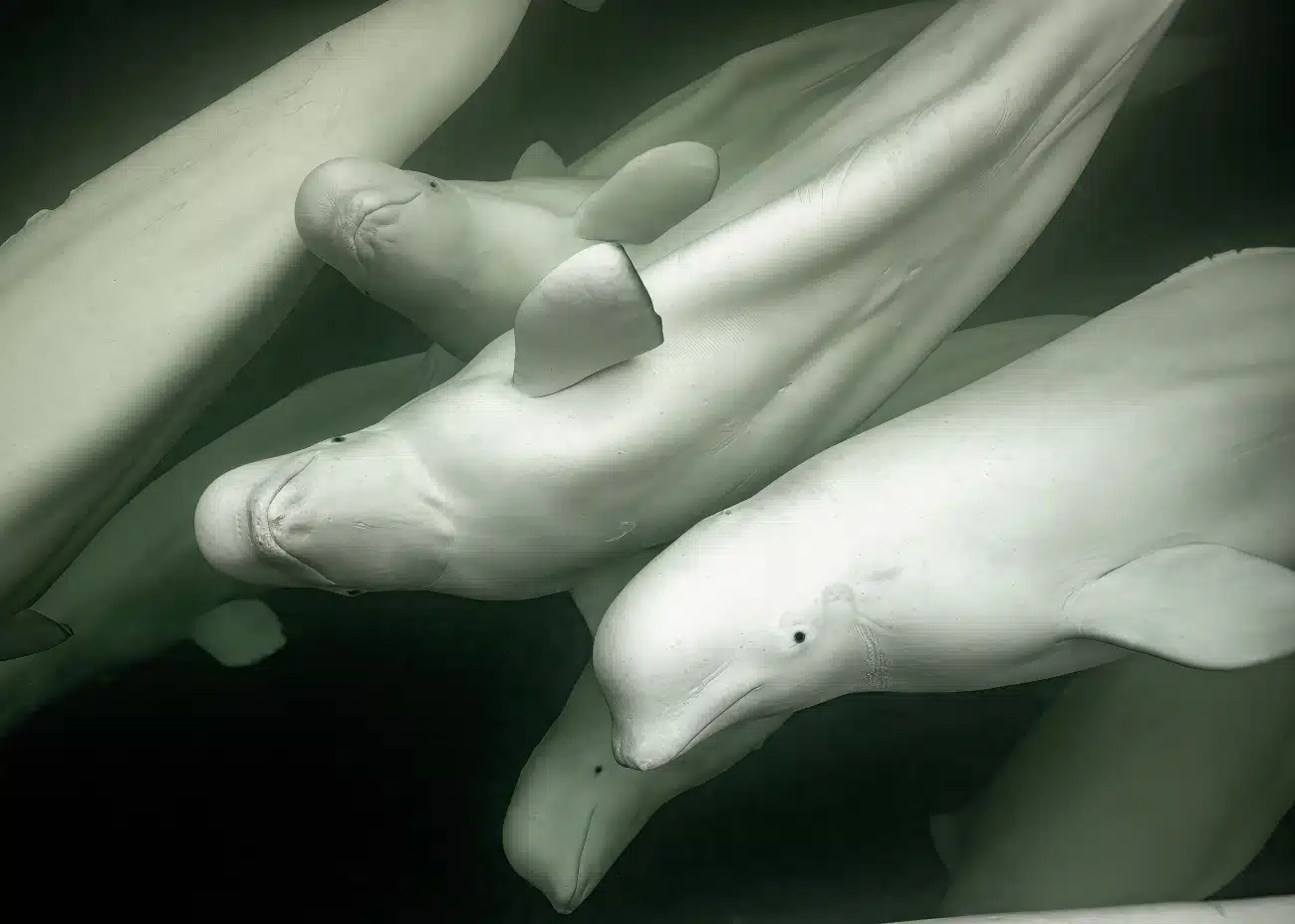
Winner, Polar Passion. Beluga Whales, Hudson Bay, Churchill,Manitoba, Canada (Photo: © Brett Freliche of Morgan Hill, California, USA)
“To photograph this group of very curious and vocal belugas, I was positioned on a foam raft connected by rope to a Zodiac boat. Wearing a 7mm wetsuit with my
underwater camera housing in hand, I would bend over the raft at my waist. My fingers and face became numb after continuous and repeated exposure to the cold Hudson Bay. Visibility was less than optimal. On the final day of the tour, a pod of belugas came within a few feet, which enabled me to capture this photo. Each year, more than 50,000 white belugas migrate to this bay to feed and give birth.”
The winners give a wide-ranging look at nature around the world.

Winner, Outdoor Adventure. Highliner During Annular Solar Eclipse, Bureau of Land Management Area Near Monticello, Utah, USA (Photo: © Belva Hayden of Waterbury Center, Vermont, USA)
“Some people are just wired to seek high adventure. Hearing that an annular eclipse was happening—where the moon passes directly between Earth and the Sun—this climber devised a way to make an extreme sport even more extreme and, in this case, an elevated experience. It took considerable planning with BASE Jump Moab climbing team to find a location that was safe for the climber on the line, and also worked for our group of eight photographers. While running and scrambling on the rocks that morning, I needed to keep calm and remember to wear the protective eclipse glasses as I focused on each shot.”
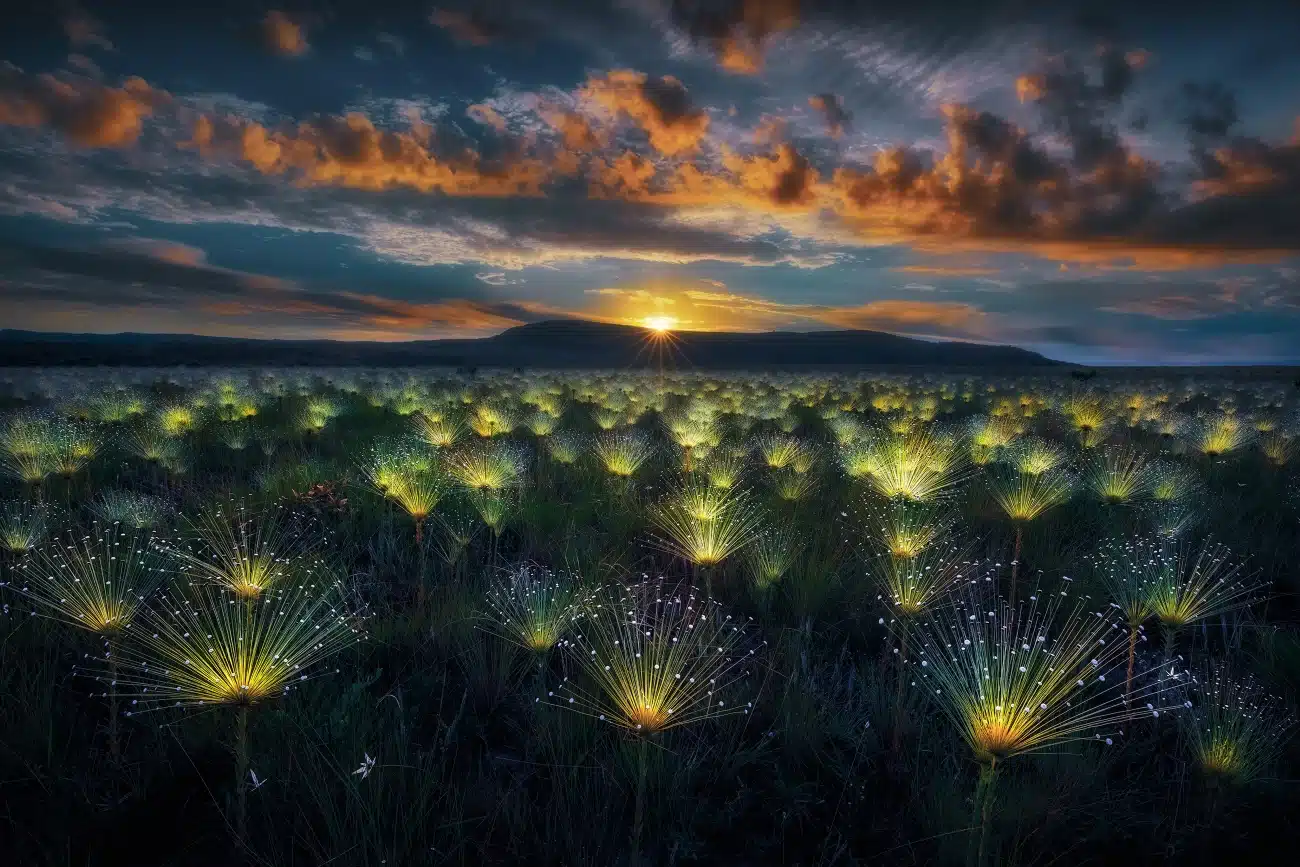
Winner, Landscapes. “Fireworks,” Wildflowers at Sunrise, Alto Paraíso, Goiás, Brazil (Photo: © Marcio Esteves Cabral of Brasília, Brazil)
“At dawn’s light on the Alto Paraíso (Highland Paradise) plateau, a stunning field of Paepalanthus mirrors the sun’s rays, giving the impression of self luminescence. Utilizing two bracketed shots, one for the sky and another for the wildflowers, I captured the harmony between the vivid sky and these unique
backlit plants. This biodiverse high-altitude Cerrado, or tropical savannah, adjacent to Chapada dos Veadeiros National Park is part of an environmental protection area (APA), safeguarding it from deforestation.”
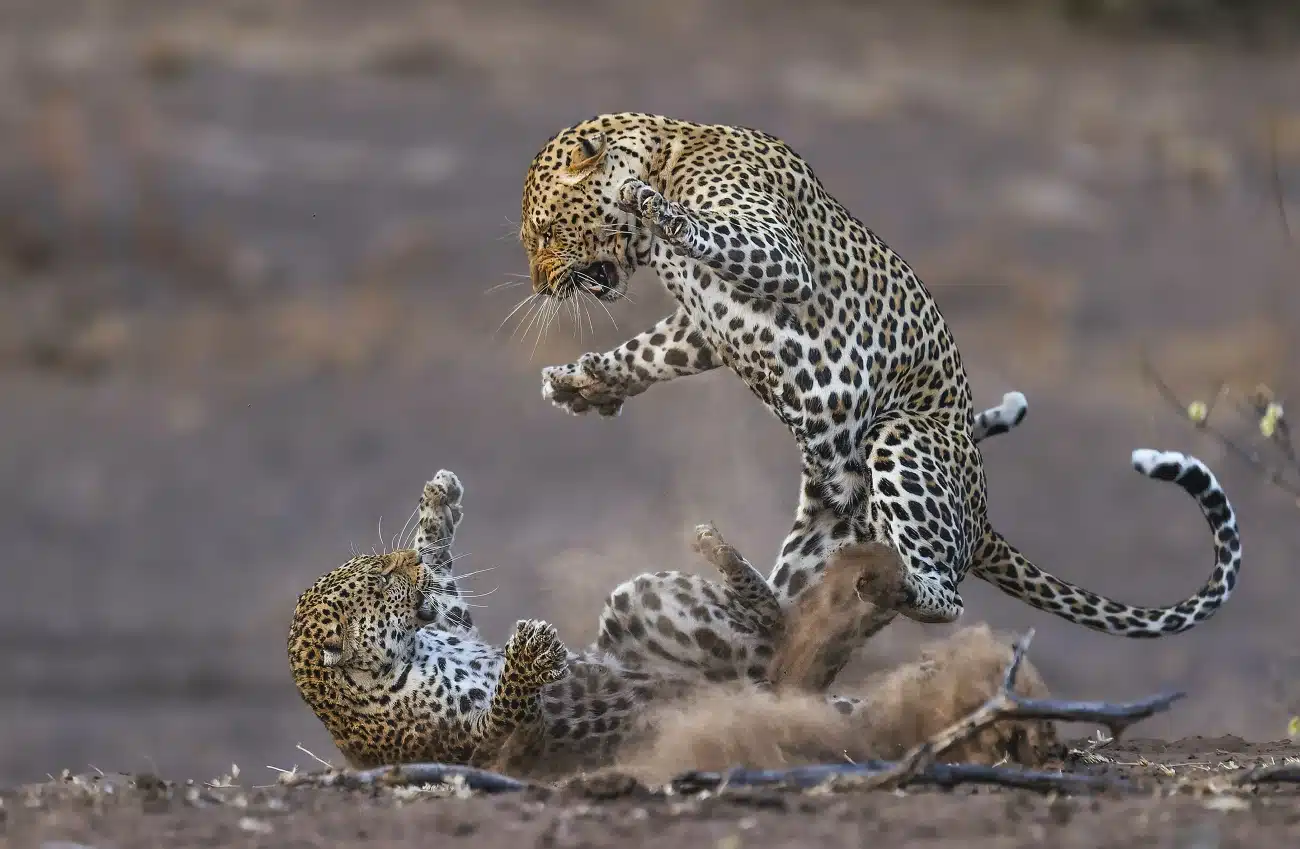
Winner, Wildlife. African Leopard Fight, Mashatu Game Reserve, Botswana (Photo: © Kevin Dooley of Albuquerque, New Mexico, USA)
“The amount of time invested in getting this image and the technical difficulties I experienced made this one of the most demanding images I have ever created.
It took luck, skill, and a lot of patience. I located these two leopards in a tree in the morning and stayed all day as the leopards were enjoying the shade on a very hot day. Close to dark, the female came down, and the male followed. I was photographing as the pair began to scuffle. Quickly losing light, I needed to maintain a fast shutter speed. In addition to the difficulty of focusing on the action, dust was in the air. But it all added to one of my favorite memories as a nature photographer.”
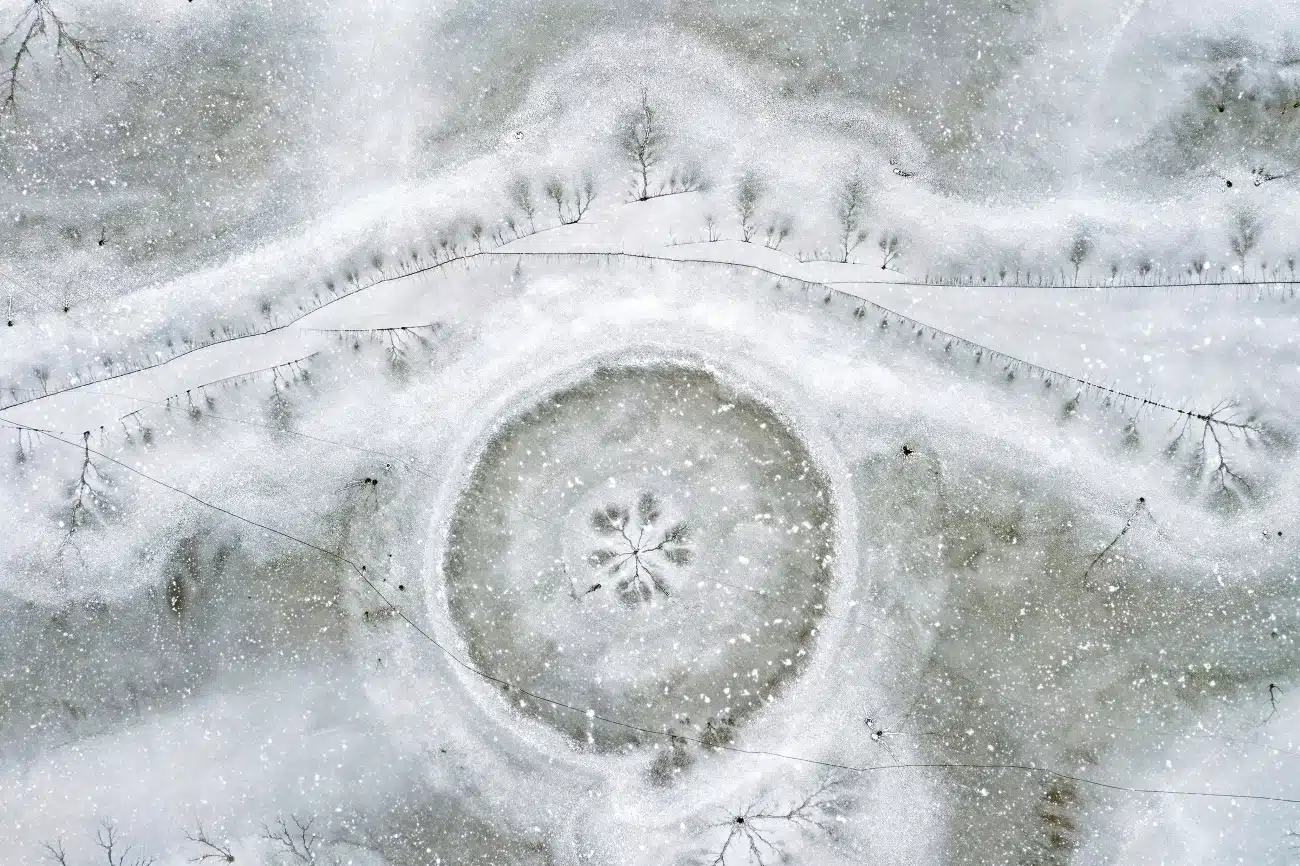
Winner, Art in Nature. Eye of Frozen Lake, Baingoin County, Nagqu, Tibet, China (Photo: © Lei Li of Taizhou, Zhejiang, China)
“I have traveled around Tibet for many years to photograph its lakes and natural wonders. In addition to using a camera on the ground, drone usage is permissible for shooting from overhead. This aerial photograph of a frozen lake revealed a symmetrical design that is not visible while standing at ground level. From an altitude of about three miles, the lake’s surface naturally creates a pattern when it freezes in winter. I have not detected this phenomenon anywhere else in Tibet, where there are more than a thousand picturesque lakes, along with the gigantic mountains.”
Among the category winners is Patricia Homonylo, whose heartbreaking documentary about bird collisions won the video category.
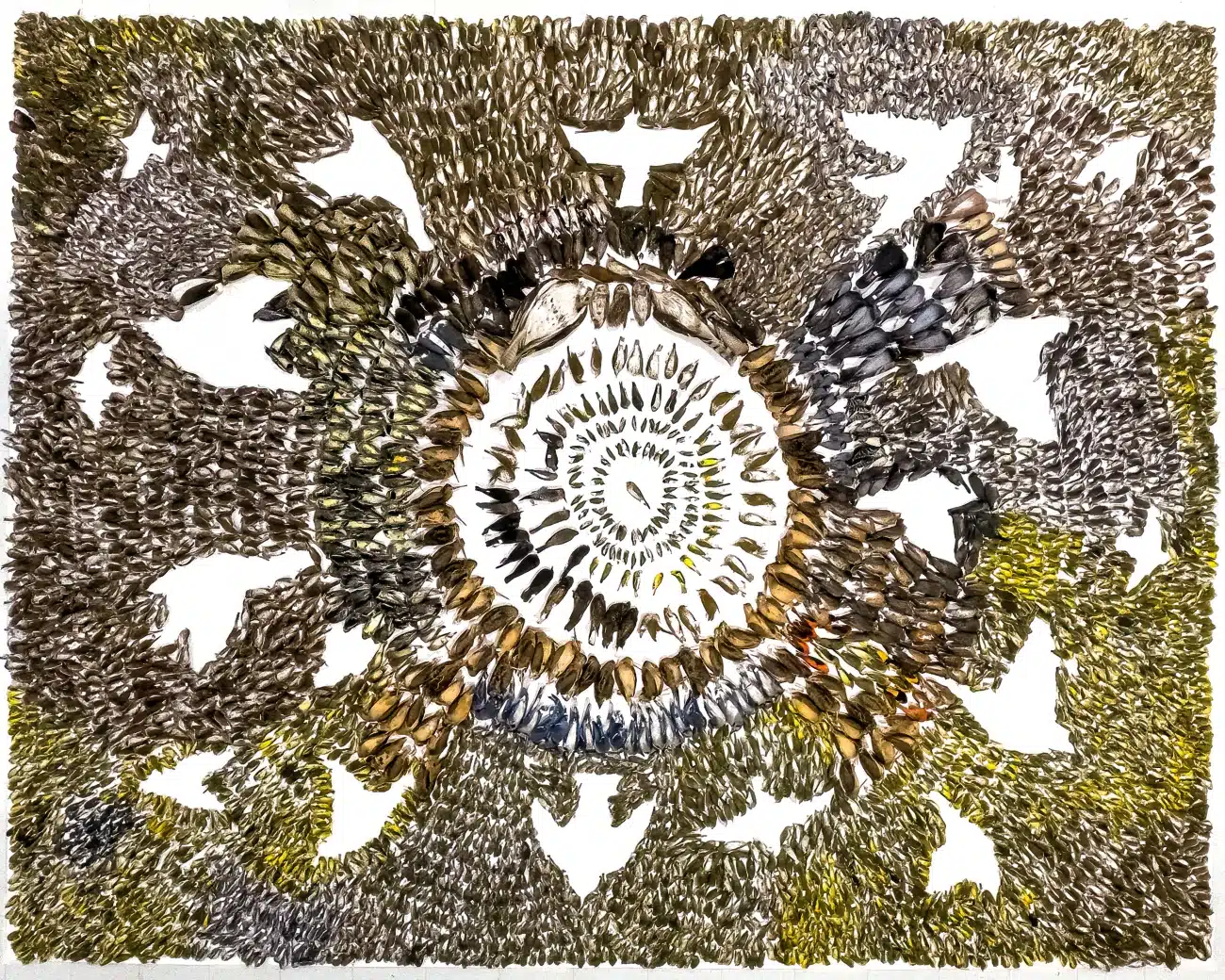
Winner, Nature in Motion, Video. “When Worlds Collide,” (Photo: © Patricia Homonylo of Toronto, Ontario, Canada)
“More than one billion birds die in North America annually due to window collisions. For the last 30 years, FLAP (Fatal Light Awareness Program) volunteers have patrolled the Greater Toronto Area in search of birds that have collided with windows. While their efforts have saved an impressive number of
birds from collisions, many do not survive the impact. Their bodies are collected, and their lives are honored in the yearly ‘Bird Layout,’ where volunteers come
together to arrange the birds’ bodies in a moving and provocative exhibition. ‘The Layout’ honors birds collected from 2021 through 2022 when FLAP
recovered more than 5,000 birds—the largest collection to date. The film’s narration includes testimonials from the volunteers as the birds are being arranged.”
All of the winners will be featured in a special 100-page winter edition of Nature’s Best Photography.
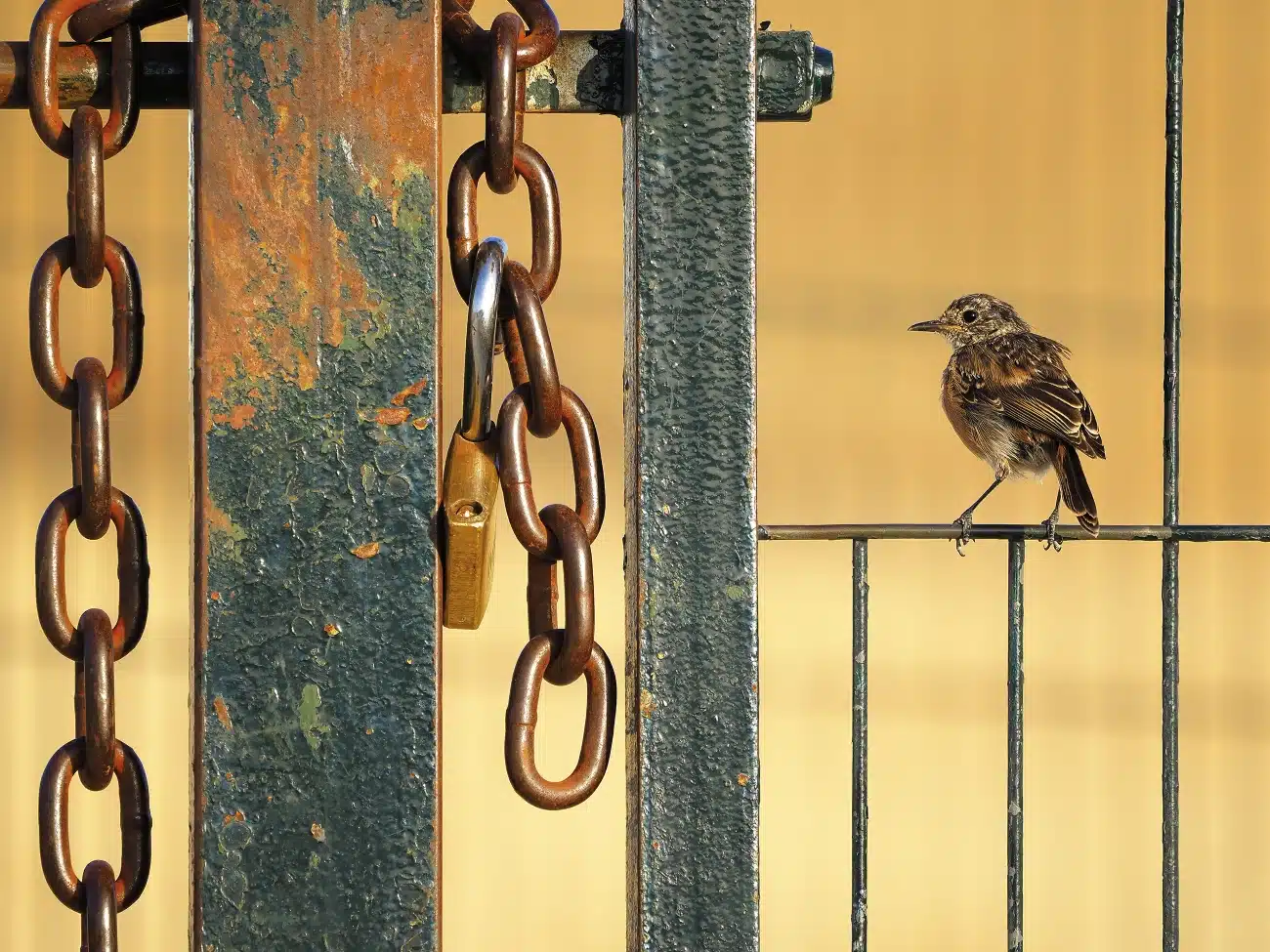
Youth Photographer of the Year. European Stonechat, Arcos de la Frontera, Cádiz, Spain (Photo: © Alberto Román Gómez, age 9, of Ubrique, Cádiz, Spain)
“On a summer afternoon, my father and I visited an agricultural area on the outskirts of Sierra de Grazalema Natural Park to photograph birds. From our car’s
back window, I noticed a young stonechat perched on a gate; the bird was diving to the ground repeatedly to capture insects. One time the bird landed briefly on a fence, and I was able to take this photograph. At this moment, it appeared to be guardian of the territory.”

Winner, Birds. Egret and Ladyfish, Yundang Lake, Xiamen, Fujian, China (Photo: © Xiaoping Lin of Xiamen City, Fujian Province, China)
“The daily opening of the ‘sluice gates’ at Yundang Lake is a key draw for wildlife photographers as it allows seawater to enter the lake, causing the tide to rise. One can observe egrets and migratory shore birds during this period. In this scene, a ladyfish chased a tiny fish; both leaped out of the water simultaneously as they passed the egret. The egret looked surprised and couldn’t decide which one to choose. I used continuous high-speed shooting to capture this fleeting moment. Through advanced development, such as building gates to let in fresh seawater, and by implementing environmental safeguards, we can create habitats for wildlife that are both suitable and sustainable, benefiting us all.”
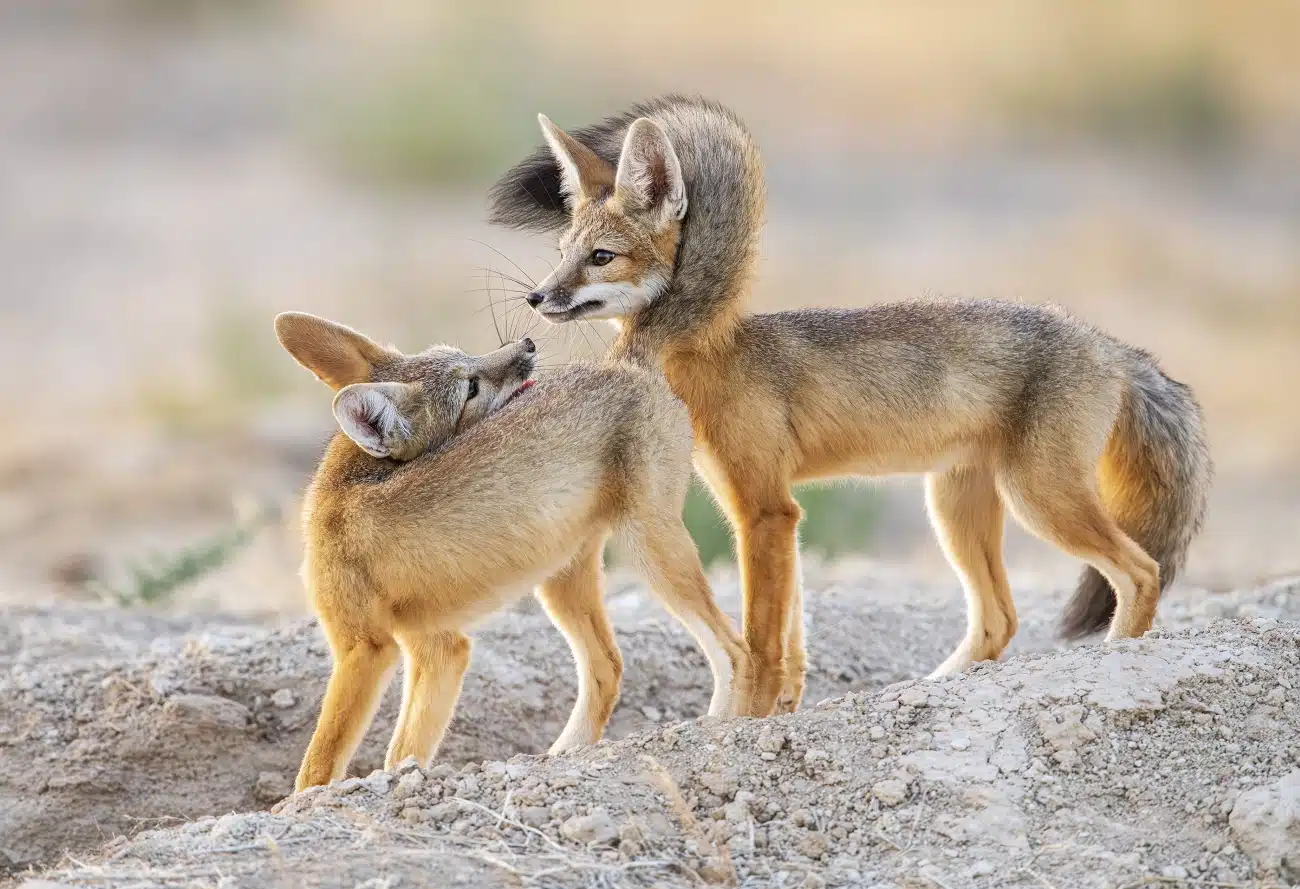
Winner, Animal Antics. Kit Foxes, Onaqui Mountain Herd Management Area, Dugway, Utah, USA (Photo: © Brian Clopp of Huntsville, Utah, USA)
“In a heartwarming display of sibling affection, one fox encircles its tail around the other. They are perching on top of an underground den, where they will go to
escape the scorching summer heat. Getting this shot involved camping in a remote desert area for three nights. The genuine tenderness between these wild animals made me smile and serves as a poignant reminder that each living creature has a unique value within our vast universe.”
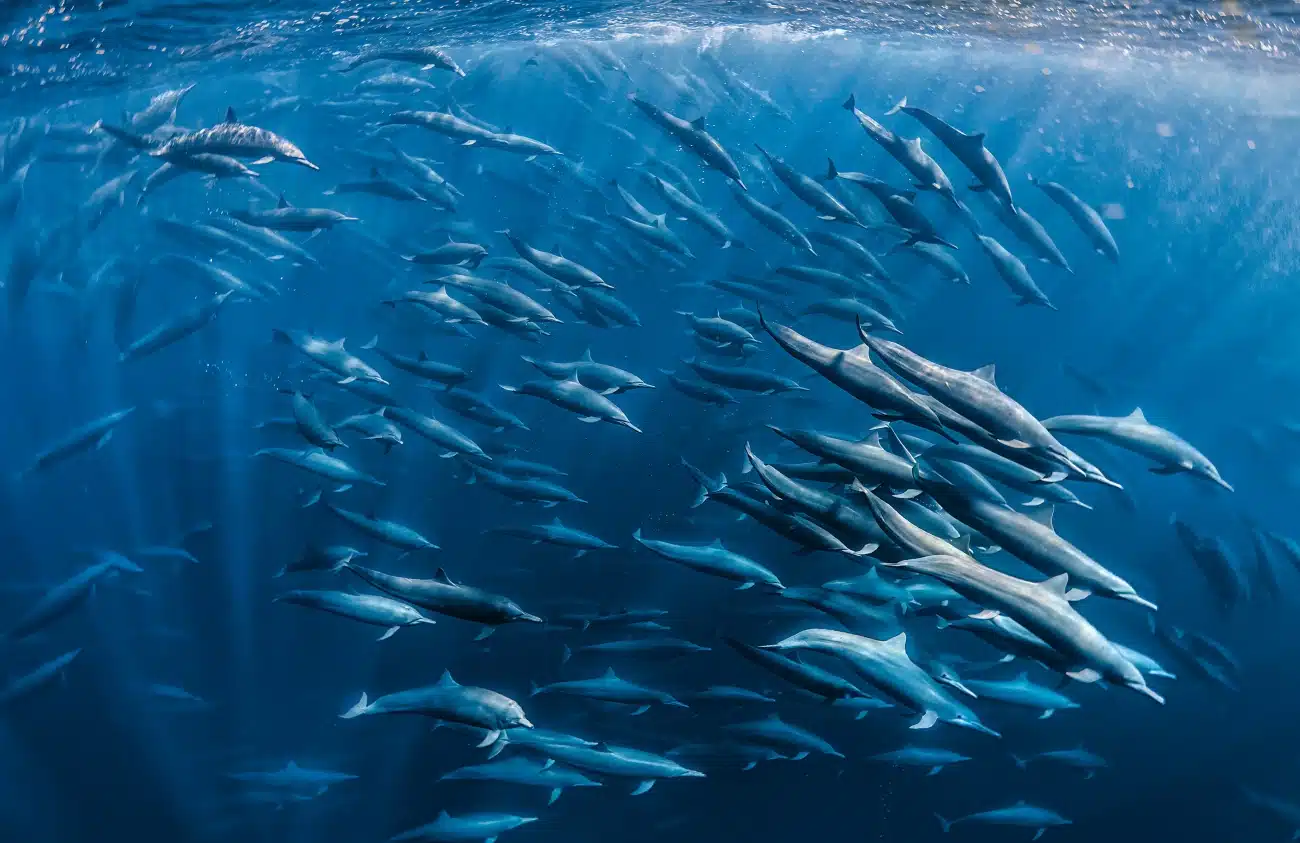
Winner, Ocean Views. Spinner Dolphins Superpod, Off Quepos, Costa Rica (Photo: © Cécile Gabillon of Toulouse, France)
“While free-diving in the Pacific Ocean, we came across this spectacular superpod of spinner dolphins herding lanternfish and guiding them toward the surface.
I was swimming so hard that it seemed impossible to capture photos, and my fisheye lens was not even wide enough to take in the scene. Being surrounded by these dolphins was one of the most amazing encounters of my life. As they welcomed me into their realm, I nearly forgot to come up for air. Sadly, it has become uncommon to see these massive groups with a decrease in marine life due to pollution and overfishing.”












































































